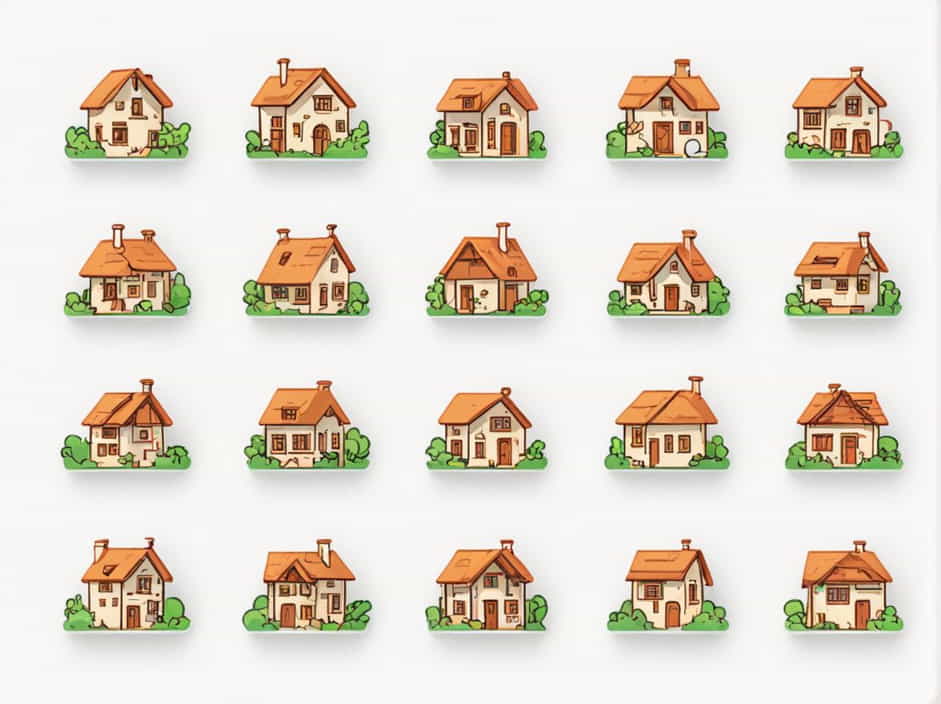Vernacular architecture is deeply rooted in local traditions, climate, and available materials. Unlike modern standardized buildings, vernacular structures are designed to meet the specific needs of their environment and inhabitants. This architectural approach emphasizes sustainability, comfort, and practicality, making it a relevant topic in today’s discussions on eco-friendly and culturally significant design.
In this topic, we will explore how vernacular architecture balances comfort and practicality, highlighting its benefits, challenges, and modern applications.
What is Vernacular Architecture?
Vernacular architecture refers to buildings designed using locally available materials and techniques, shaped by cultural and environmental factors. These structures reflect the identity of a region and are often passed down through generations. Unlike formal architectural styles, vernacular architecture is not influenced by global trends but rather by the functional needs of the local community.
Key Characteristics of Vernacular Architecture
- Use of Local Materials – Wood, stone, clay, bamboo, and other regionally sourced materials are commonly used.
- Climate Responsiveness – Designs adapt to temperature, humidity, and seasonal variations.
- Cultural Significance – Structures reflect traditional lifestyles and societal values.
- Simplicity and Efficiency – The focus is on functionality rather than aesthetics.
Comfort in Vernacular Architecture
One of the key aspects of vernacular architecture is comfort, achieved through passive design strategies that enhance thermal regulation and ventilation.
Natural Ventilation and Cooling
Traditional homes are designed with openings, courtyards, and high ceilings to allow air circulation, reducing the need for artificial cooling. In tropical regions, houses often have large windows and shaded verandas to prevent overheating. Meanwhile, in colder climates, thick walls made of stone or clay help retain warmth.
Thermal Mass and Insulation
Locally sourced materials such as adobe, mud bricks, and thatch have excellent insulation properties. These materials help stabilize indoor temperatures, keeping interiors cool during the day and warm at night. This passive approach minimizes reliance on energy-intensive heating and cooling systems.
Human-Centric Design
Vernacular architecture prioritizes human comfort by ensuring adequate lighting, airflow, and ergonomic space arrangements. Traditional homes often include communal areas for social interaction, aligning with cultural practices that emphasize togetherness and shared living spaces.
Practicality and Sustainability
Vernacular architecture is not only comfortable but also highly practical. It provides cost-effective, sustainable solutions to housing needs without compromising durability or functionality.
Adaptation to Local Conditions
Unlike generic construction methods, vernacular buildings are tailored to withstand local environmental challenges. For example, homes in flood-prone areas are often elevated on stilts, while desert dwellings incorporate thick mud walls to counter extreme heat.
Cost-Effective Construction
Using locally available materials reduces transportation costs and dependency on imported resources. Additionally, vernacular building techniques often rely on community participation, lowering labor expenses and fostering local craftsmanship.
Low Environmental Impact
Vernacular architecture promotes sustainability by reducing waste and minimizing the carbon footprint associated with construction. Natural materials decompose easily, unlike modern synthetic alternatives that contribute to pollution.
Challenges of Vernacular Architecture
Despite its advantages, vernacular architecture faces challenges in modern society. Urbanization, changing lifestyles, and regulatory constraints can limit its application.
Urbanization and Modernization
As cities expand, traditional building methods are often replaced by standardized construction practices. High-rise buildings and mass-produced materials dominate urban landscapes, leaving little room for vernacular approaches.
Lack of Awareness and Recognition
Many people perceive vernacular architecture as outdated or unsuitable for contemporary living. However, integrating traditional wisdom with modern innovations can bridge this gap and highlight its relevance in today’s world.
Regulatory and Legal Barriers
Building codes and zoning regulations often favor industrialized construction methods, making it difficult to implement vernacular techniques in urban settings. Advocacy and policy changes are needed to promote sustainable and culturally appropriate design.
Modern Applications of Vernacular Architecture
While traditional vernacular architecture is declining, modern architects and designers are reviving its principles to create sustainable and climate-responsive structures.
Green Architecture and Passive Design
Architects now incorporate vernacular strategies into eco-friendly designs. Features like green roofs, natural ventilation, and energy-efficient materials draw inspiration from traditional building methods.
Hybrid Approaches
Combining vernacular techniques with modern technology allows for innovative and practical solutions. For example, earthen homes reinforced with modern structural elements enhance durability while maintaining sustainability.
Cultural Preservation Initiatives
Several organizations and communities are working to preserve vernacular architecture by restoring traditional homes and promoting local craftsmanship. These efforts help maintain cultural heritage while adapting to contemporary needs.
Vernacular architecture demonstrates a perfect balance between comfort and practicality. By utilizing local materials, passive design, and sustainable construction methods, it provides a model for eco-friendly and cost-effective housing. While modernization poses challenges, integrating vernacular principles into contemporary architecture can offer solutions to today’s environmental and housing issues.
As the demand for sustainable living grows, embracing vernacular architecture can pave the way for a more resilient and culturally enriched built environment.
